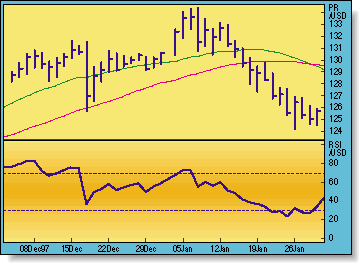
The real challenge in trading mechanical systems is not in the design and development phase but in the execution. Execution discipline is often difficult to achieve because of the extra information that the trader has (or thinks he or she has) that is not reflected in the system logic.
TRADING TECHNIQUES
Mechanical Trading System And The Art Of Positive Slippage
by Marcello Cattaneo Adorno
Traders following mechanical systems can see situations that may affect mechanically based signals. Here, then, are some steps to include technical signals outside of your basic trading signal.
What makes it more difficult still is that often the intuitive hunch not to follow a signal proves to be correct, therefore transforming what was originally intended to be a mechanical trading program into what can best be described as a discretionary trading program based on technical indicators.
While this approach, depending on the trader's talent and experience, may actually lead to excellent results, it will lack the primary advantages of a well-designed and executed mechanical system, advantages such as:
A mechanical trading program should be viewed as more desirable from a client point of view due to greater reliability. Analogous with industry, the only way to control the quality of a manufactured product and ensure its consistency is for the manufacturer to use defined formulations and process parameters that are clearly communicated to the manufacturing team and followed in a disciplined fashion. This approach can be compared with a crafted, nonstandard product, where quality will be less consistent and will instead be dependent on a specific artist or craftsman.
- Predictability of the risk-return profile
- Adaptability to a team approach
- Execution independent from the presence of one specific trader
- Reduced risk that performance will be affected by the absence of the key trader
- Trading philosophy and rules that can be explicitly disclosed to the investor/client if so desired
- Easy-to-disclose improvements and modifications made to the system.
POSITIVE SLIPPAGE
Here's an alternative to a totally mechanical trading philosophy, an alternative that will add value to the execution phase by recognizing that the individual trader will often have knowledge and insights unrecognized in the system logic. We shall define a set of rules and controls that enable the trader to follow his intuition and possibly override a system signal, but without losing the advantages of a totally mechanical program.
This strategy is best applicable to trend-following systems; nevertheless, the same logic could be developed and adapted to countertrend systems. A trend-following system is a set of rules and conditions that, if satisfied, will indicate that there is a high probability that:
Normally, the set of rules and conditions will have been back-tested on historical data, and the developer will have a certain level of confidence (specified statistically) regarding the probability of a profitable trend actually occurring. All else being equal, the level of confidence will be higher when the sample is larger.
- A trend is in force
- This trend will have enough strength and persistence to provide a profitable trading opportunity.
In view of this, it seems counterproductive to override a signal that indicates there is a high likelihood of the desired event -- the profitable trade. Nevertheless, other factors, both technical and fundamental, may influence the trader and make him want to skip the trade. If these factors are clear in the trader's mind, then those factors could be described as a rule or condition, indicating a trade in the opposite direction to the main signal.

Excerpted from an article originally published in the November 1998 issue of Technical Analysis of STOCKS & COMMODITIES magazine. All rights reserved. © Copyright 1998, Technical Analysis, Inc.